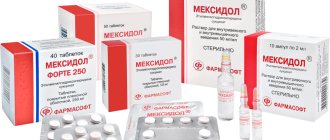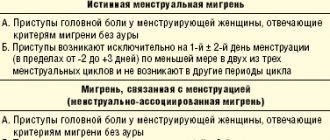One of the versions of the origin of the name of the disease is based on a story about sailors who drank white whiskey throughout the voyage. And having gone ashore, they fell into collective madness. Doctors observe something similar today after the long New Year or May holidays, when citizens who have been abusing for a week suddenly remember that they urgently need to be at work tomorrow, and very preferably sober.
This is where, on the 2-3rd day of abstinence, a complication of withdrawal syndrome occurs, a disease popularly known as “squirrel”. She visits men 4 times more often than women. And it almost always indicates that the patient’s experience of alcoholism is at least 7–10 years.
Data
- Delirium tremens occurs in connection with the cessation of alcohol intake in alcoholics .
- Typically, an affected person will experience shaking , sweating , restlessness, confusion, seizures and hallucinations.
- Causes swelling of the brain, which is a life-threatening condition.
- Treated with large doses of sleeping pills.
- It is important to get enough B vitamins, as they prevent this process, and their deficiency leads to the development of Wernicke-Korsakoff syndrome.
Alcohol delirium - symptoms and treatment
Diagnosis is made by symptoms. In a person with delirium tremens, it is important to exclude other pathological changes such as electrolyte abnormalities, pancreatitis and alcoholic hepatitis[2].
In addition, delirium tremens must be distinguished from the following diseases:
- sepsis;
- uremia (severe manifestation of renal failure);
- stroke;
- meningitis;
- encephalitis;
- Wernicke's encephalopathy;
- neuroleptic malignant syndrome;
- pheochromocytoma (benign adrenal tumor);
- toxicity of psychoactive substances such as amphetamine, hallucinogen, cocaine, heroin;
- electrolyte disturbances - hypocalcemia and hypomagnesemia;
- thyrotoxicosis (excess thyroid hormones);
- cerebral hemorrhage;
- cerebral embolism;
- toxic ingestion or exposure to ethylene glycol;
- acute liver failure;
- diabetic ketoacidosis;
- brain abscess;
- hypoglycemia (low blood sugar)[22][24].
Intoxication accompanied by delirium usually corresponds to acute toxic encephalopathy caused by alcohol. In this case, both toxic encephalopathy (code G92) and alcohol-induced delirium (set after G92) must be documented and coded, as well as the toxic effect code, which should be coded first[18]. In this case, delirium is considered as a symptom of the underlying disease of toxic encephalopathy.
Documenting only alcoholic encephalopathy results in the assignment of code G31.2, which is reserved for nervous system degeneration such as alcoholic cerebellar or cerebral degeneration. It represents a chronic, permanent structural encephalopathy rather than an acute, reversible encephalopathic process. Therefore, it is necessary to document acute toxic encephalopathy caused by alcohol intoxication[19].
Key features of alcohol-induced psychosis are delusions and hallucinations, but these must be distinguished from schizophrenia, which is not alcohol-related [20][21][22]. However, drinking alcohol may precipitate psychotic episodes in patients with schizophrenia.
Other alcohol-related disorders usually arise directly from drinking: anxiety disorders, mood disorders, sexual dysfunction and sleep disorders. If a patient is an alcohol abuser and has any of these disorders, the record should always clarify whether the conditions are related.
Anxiety disorders are numerous (eg, generalized anxiety, phobias, and panic disorder) and commonly overlap. They share traits of excessive fear and anxiety and associated behavioral disturbances. Mood disorders include depression and other related conditions that have complex DSM-5 definitions. Sexual dysfunction includes problems such as erectile dysfunction, disorders of sexual interest/desire, and other significant disorders.
The DSM-5 identifies 10 sleep disorders or groups of disorders, and some of them may be caused by alcohol, including insomnia, hypersomnia, and circadian rhythm disorder. Other problems, such as narcolepsy or sleep apnea, are not related to alcohol.
Thus, the correct diagnosis and coding of delirium delirium is a complex process. The classification of ICD-10-CM (International Classification of Diseases, 10th Revision) codes largely follows the DSM-5 definitions, with very specific codes that combine types of alcohol dependence and alcohol-induced conditions.
Clinicians should determine whether a patient has mild, moderate, or severe alcohol dependence based on DSM-5 diagnostic criteria and document any alcohol-related conditions. The medical record should always clarify whether the patient's condition is caused by alcohol dependence or not[31][32][33].
A general understanding and basic knowledge of diagnostic standards and the interrelationship of these conditions contributes to accurate documentation, accurate coding, and quality of care.
Differential diagnosis of delirium tremens
Delirium tremens must be distinguished from delirium caused by other causes, such as taking medications or drugs. It should also be distinguished from amentia syndrome - clouding of consciousness due to severe infectious diseases, poisoning and schizophrenia.
When to ask for help
A psychiatrist should be contacted if symptoms of delirium appear: rapid heartbeat, high blood pressure and hallucinations.
Symptoms of delirium tremens
- Delirium usually occurs after particularly long and powerful binges.
- As a rule, delirium occurs 2-4 hours after you stop drinking. It begins with irritability, sleep disturbances, anxiety, and nightmares.
- Illusions and hallucinations arise. The patient will say that he sees insects or small animals. Sufferers are often terrified and can actually feel animals on their bodies. The person is disoriented in time, place and situation. He sweats , has palpitations , tremors , and sometimes has convulsions and epileptic seizures . The attacks themselves can be dangerous. In severe forms of delirium, circulatory problems and cardiac arrest may occur.
Symptoms of delirium
Classic psychosis begins gradually. Narcologists distinguish a prodromal period and 3 stages of delirium. Symptoms of delirium tremens continuously increase over 2-8 days. Up to 10% of patients experience two or three attacks, which are separated by short (60 minutes to 24 hours) periods of normalization. The classic form of delirium ends acutely - a person suffering from psychosis falls into a deep, prolonged sleep. In 1/4 of patients there is a gradual recovery from fever.
The first stage of psychosis is accompanied by changes in a person's mood. Anxiety gives way to euphoria. Then the patient’s emotional state worsens, and signs of depression appear. The pace of speech accelerates, movements become sharp.
The second stage of psychosis is accompanied by hallucinations when the patient falls asleep. Individuals suffering from delirium experience nightmares. Sleep remains superficial. Awakening does not allow a person to separate dreams and reality. During the daytime, the patient observes visual illusions, which contribute to the deterioration of his mood and an increase in anxiety. The transition to the third stage of fever is accompanied by the development of insomnia. The intensity and duration of the hallucinations increase.
Completion of the third phase of psychosis means exit from delirium. In 90% of cases this happens abruptly, in 10% it happens gradually. The patient is tired, his mood fluctuates from enthusiastic-sentimental to depressed-hysterical. Men suffer from mild hypomania, women face depression. Patients of both sexes remember their hallucinations well, but cannot separate them from the real events of past days. The consequences of delirium tremens depend on the general state of human health and the intensity of changes in the tissues of internal organs due to alcoholism.
Are you experiencing symptoms of delirium tremens (delirium tremens)?
Only a doctor can accurately diagnose the disease. Don't delay your consultation - call
Dosage of drugs
- Intravenous administration and titration lead to the desired result.
- The dosage should be so that the patient sleeps.
- The required total dose of the drug may vary widely.
- Haloperidol or another antipsychotic may be indicated in exceptional cases, as an addition to benzodiazepines.
- Antipsychotics are recommended not only because they lower the seizure threshold, but because they mask withdrawal symptoms.
- Always thiamine (vitamin B1 = thiamine 25 mg/ml) during hospitalization to prevent encephalopathy. Thiamine 100-200 mg intravenously slowly, then 50-100 mg per day.
- Magnesium can be given to all patients with normal renal function.
- In severe forms of delirium tremens, temperature must be measured, pulse and blood pressure are recorded regularly due to the danger of hypotension and hyperthermia.
- Correction of electrolyte and water imbalances with the help of droppers every 7-8 hours.
Characteristic features of the pathology
Typically, delirium tremens is a consequence of prolonged heavy drinking in patients with alcoholism of 2-3 degrees of severity. It occurs somewhat less frequently in people with poor tolerance to alcohol who have consumed large quantities of it. The cause of delirium tremens, or delirium tremens, is obvious - constant abuse of alcohol. But narcologists identify several factors that are highly likely to provoke acute psychosis:
- consumption of low-quality alcohol, household chemicals with ethyl alcohol, surrogates sold in pharmacies under the guise of medicinal tinctures;
- previous traumatic brain injury;
- chronic brain disease, including a history.
Stress and physical fatigue predispose to the onset of alcoholic delirium. An interesting fact is that there have been many cases of psychosis during hospital treatment. But not in narcology, but in the cardiology or gastroenterology department. An alcoholic is hospitalized with angina pectoris or gastric ulcers, and he develops severe delirium due to the lack of another dose of alcohol.
Consequences of delirium tremens
Mortality rate is approximately 15%. But today this figure has dropped by several percent among patients seeking medical help. The real death toll, however, is likely slightly higher as not all people were hospitalized.
Most alcoholic delirium is a short-term condition. More than 80% goes away within three days if treated correctly. Some may have symptoms for a longer period of time. In very rare cases, symptoms may last for 4-5 weeks.
More than a third of people who experience delirium tremens will be dead within 8 years from alcohol-related illnesses or accidents.
Classification of psychoses
Narcologists distinguish 6 types of alcoholic delirium.
| Type of delirium | Description |
| Classical | Symptoms develop gradually. The pathology has distinct stages that successively replace each other. |
| Lucid | It has an acute onset. The patient does not suffer from hallucinations or delusions. There is a lack of coordination, anxiety, fear |
| Abortive | Characterized by fragmentary hallucinations. Delusional ideas are fragmentary. Anxiety manifests itself in wave-like attacks |
| Professional | It begins as a typical psychosis. At the next stage, hallucinations are reduced. The patient makes repetitive movements associated with professional activities or everyday activities (dressing and undressing) |
| Mussitating | Arises on the basis of professional delirium. Accompanied by severe clouding of the patient's consciousness. Key symptom: movement disorders |
| Atypical | Characteristic for patients who have experienced fever previously. Symptoms are similar to those of schizophrenia |
The signs of each type of delirium tremens are specific, which makes it easier to make a diagnosis when patients enter clinics.
How to avoid this condition
When an alcoholic stops drinking, it is very important that any withdrawal symptoms are treated with certain types of anti-anxiety medications. Partly to mitigate this period of time for the sufferer, but also to prevent brain damage that could eventually pave the way for delirium tremens.
A healthy diet, vitamins and minerals are probably also important. However, patients simply do not comply with these recommendations.
At the first manifestations of delirium tremens, consult a narcologist . He has cleansed the body after binge drinking and will select a further treatment regimen and coding .
Treatment
There is no way to bring a person to his senses on his own. Only drug treatment will make therapy effective and safe.
- The protective regime will eliminate external catalysts for deterioration of well-being and provide the necessary peace. For round-the-clock medical observation, the patient is indicated for hospitalization in a hospital. At the clinic, the patient undergoes detoxification, which will remove traces of alcohol from the blood.
- Pathogenetic and symptomatic therapy restores water-salt and acid-base balance, blood pressure, metabolic processes, brain function and other organs.
- The use of psychotropic drugs reduces cravings for alcohol and facilitates recovery from withdrawal symptoms.
Additional methods that help to quickly get out of a difficult physical and mental condition are: electrophoresis, darsonvalization, electrosleep. During the treatment of alcoholism, patients are interviewed by a psychotherapist who helps them cope with emotional discomfort and motivates them to stop drinking alcohol forever.











